
 |
|
|||||||||
|
|
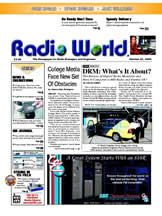 |
||||||||
 |
Four AM Stations Sharing One Site by Mark Persons |
Radio
World Article August 1, 2013 |
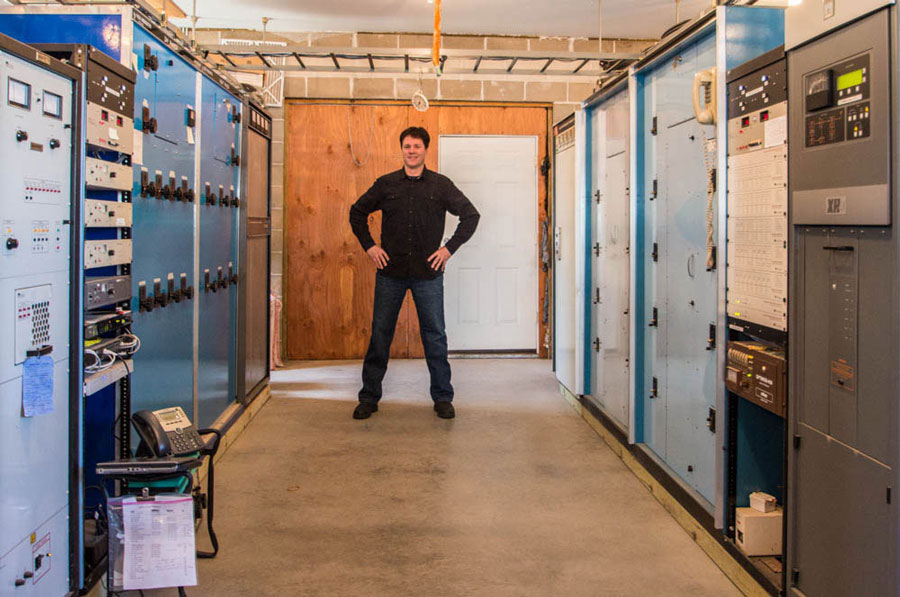 Gary Hoppe on top of the world with four AM radio stations at Sauk Rapids, Minnesota |
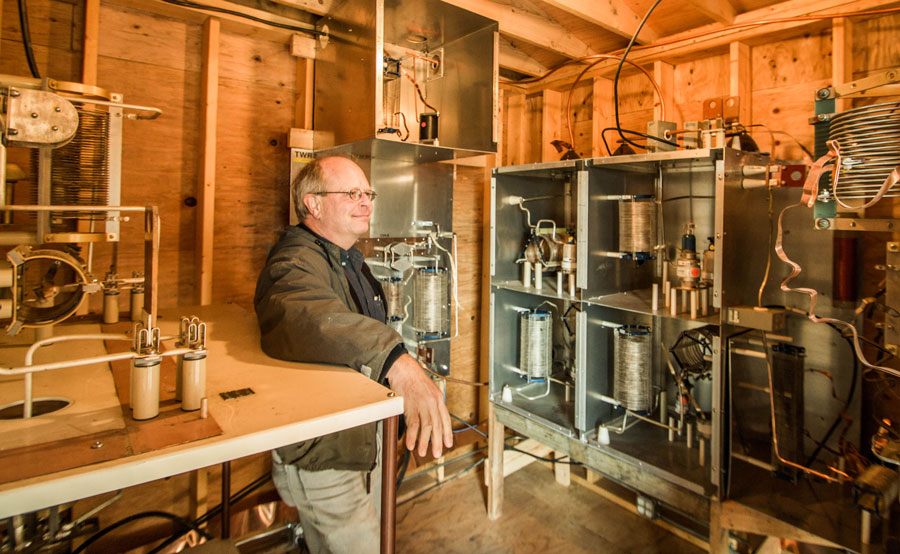 Engineering Consultant Mark Mueller admiring his work |
 Mark Persons writes: It all started in 1963, when Herb Hoppe signed on with a 250 watt AM daytimer on 800 kHz at Sauk Rapids, Minn., some 60 miles northwest of Minneapolis, in a market of 100,000 people. WVAL, as he called it, was named after his wife, Val. Fast forward to 1982, when the FCC opened up the AM "clear channels," allowing additional nighttime service applications on those otherwise sacred frequencies. Herb moved the station over to 660 kHz at 10 kW by day and 250 watts by night, with four towers using a Harris transmitter and phasor system. He had to let go of the 800 kHz frequency due to FCC ownership rules at the time. An FCC rule change in the 1990s allowed broadcasters to have more than one AM station in the same town. Herb applied, with the help of Mueller Broadcast Design, to get 800 kHz back and built a 2,600 watt daytime/850 watt nighttime facility in 1996, using a new Nautel transmitter and phasor from Kintronic Labs, this time with two towers during the day and three towers at night, "diplexed" to share the same towers as 660. That�s right: Two AM stations feeding the same towers at once. This practice is becoming more commonplace nowadays, as real estate values and construction costs have risen, but at the time it was not as widely done by owners and station engineers. The 660 kHz became WBHR(AM) sports talk, and 800 kHz got its original WVAL call sign. Classic country fiddle music, as it was broadcast in the 1960s, was heard again on 800, to the delight of listeners and the station's accounting department. Herb�s son, Gary, became involved and saw an opportunity in the 2004 AM Auction 84 filing window to add to the mix. He applied for 540 and 1010 kHz during the window and got approval for 1010 first. This required building three more towers and "triplexing" three stations into most of the same towers with two patterns. (It's 1.7 kW into three towers daytime and 240 watts into four towers nighttime.) This one is WMIN(AM), a great call for a Minnesota station that had been used on 1010 in the Twin Cities prior to its move to 1030 and then 740 kHz. Finally, again with the help of Mark Mueller, they added 540 kHz with 250 watts using four towers by day and three towers at night. This one is WXYG(AM) and now it is "quadplexing." Engineering got more complicated, but still workable. With such a low frequency, the coverage is phenomenal. Did you know that 250 watts on 540 is almost equal to the coverage of 50 kW on 1600 kHz in areas of low ground conductivity? What made all of this economically feasible was that no more land was needed to add three towers and three stations to the first one. The original 40 acres of land was enough. A new and much larger transmitter building was constructed to hold the additional transmitters and phasing systems, but that was an interesting project unto itself. I was involved in most of the onsite engineering work, but most credit should be given to Mark Mueller for the design and tuning of this masterpiece of a system. The original WVAL ITA AM-250A Transmitter was converted from 800 kHz to be used as a backup on 660 kHz and then converted again as a backup for 1010 kHz. Each time, it performed flawlessly and is still working after more than 50 years. Plus, because it is a tube transmitter, it was able to handle huge amounts of reflected power while each new directional array was tuned. Only after the tune-up were solid-state transmitters brought online. IN PRACTICEMark Mueller continues: In 1995 the client asked if he could have his old frequency back now that the FCC allowed broadcasters to have more than one AM station in the same town. After a bit of analysis, I determined that the answer was a big yes. WVAL had moved to 660 kHz in the 1980s but was originally on 800 kHz with 250 watts non-directional day but no night authority. My study showed that 2,600 watts day and 850 watts night was possible, but both would need to be directional. Hmmm, where could the transmitter site be located? Well, the client already had four towers on a huge piece of property, just outside of town, that was being used for 660 kHz, and the ground system was more than large enough, plus the tower heights and spacings would work fine on 800 kHz. FCC filing windows were still in the future so an application for a new station on 800 kHz was tendered in January 1996 and granted by the FCC in 1997. Kintronic Labs built the phasor, antenna coupling networks and diplexing filters to keep 800 from interfering with 660 kHz and vice versa. Mark Persons did the installation and I tuned and proofed the system with both stations happily running into the same set of towers. Diplexing can be a great solution for where to locate a station. No new land was required and the transmitter building was just (barely) large enough to house two phasors along with main and auxiliary transmitters for each. WVAL returned to 800 kHz in March of 1999 while 660 kHz became WBHR. Then, as often happens, clients see opportunity in expansion and with the WVAL addition to WBHR proving that it could be economically done, the question of whether additional frequencies were usable from the site came up. Two were found, and the story continued with the 2004 Auction 84 AM filing window and the addition of the two stations. Three more towers were built on the same piece of land to optimize the patterns and make it all work out right. 1010 was granted first in 2005 and implemented in 2008, while 540 was granted in 2007 and constructed in 2010. It was an interesting challenge keeping up with this unique project, as there are no other four-station directional antenna arrays to compare it with. Having three of the four stations on the lower end of the band helped in some respects, like keeping stray inductive reactances from the interconnecting tubing under control, and hindered in others, as when low drive-point impedances were encountered on WXYG. In order to minimize the potential for unpleasant surprises, the tower houses were rebuilt to hold all of the equipment, which was then installed as a unit instead of piecemeal additions to each existing array. Close attention to grounding and component layout minimized interaction between stations and allowed the system to perform with no significant interaction or cross products. There are more than 50 pass-reject filters in this system, since none of the stations use all seven of the unused towers, which are detuned through the filters. The entire system had already been modeled for the design, and development around the site was affecting existing monitor points, so MoM (Method of Moments) antenna proofs were done on all four stations. It has been well over a year since the last station was added and there have been very few maintenance problems, not bad considering four stations are sharing the same site. The client is happy and I am also very pleased that this
kind of setup can and will work. |
|
|
|
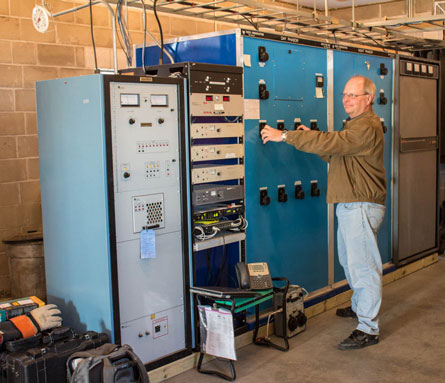 |
 (above) the WVAL transmitters and phasor (left) Mark Mueller tuning the WXYG phasor |
|
|
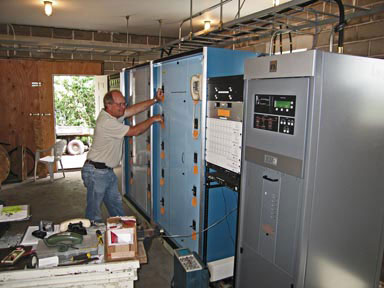 |
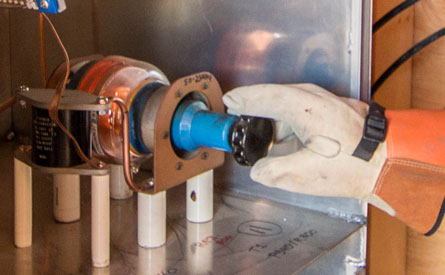 |
Mark Mueller at work
tuning an antenna coupling network, a phasor, and a filter using a high
voltage glove. Very interesting work that paid off. |
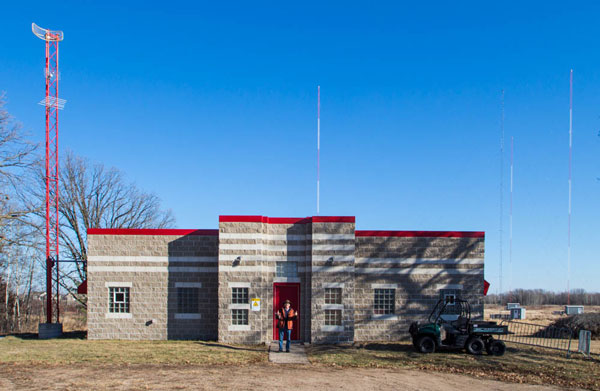 |
Mark Persons was "thumbs
up" on the building project. The "retro" building architecture was just right. |
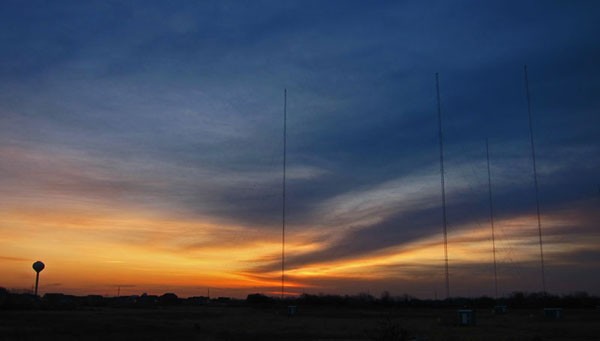 |
Sunrise at the combined
stations site. The world is waking up to the sounds of radio. |
| Mark Persons, W0MH, is a professional broadcast engineer
certified by the Society of Broadcast Engineers. He has more than 30
years of experience and has written numerous articles for industry
publications. His website is
www.mwpersons.com.
Mark Mueller has been a broadcast technical consultant
specializing in AM directional arrays for 30 years and can be reached at
Mueller Broadcast Design, in La Grange, Ill., by visiting the website
www.muellerbroadcastdesign.com. |
|
From the Radio World,
August 1, 2013
issue which appeared online 08.08.2013:
http://www.radioworld.com/article/four-am-stations-sharing-one-site/220752
See you down the road. I'll leave the
soldering iron on for you.
Mark Persons, W0MH. |
|
Questions? Email Mark Persons: teki@mwpersons.com |
|